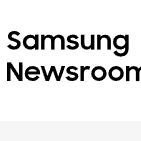By
Samsung Newsroom
January 2025
Unveiling Invites to "Galaxy Unpacked 2025" Ushering in a New Era of Mobile AI
New Galaxy products are unveiled at Galaxy Unpacked 2025! Galaxy Unpacked 2025 commences on January 23, 3 AM KST (January 22, 10 AM local time) in San Jose, USA. It is streamed live online via the Samsung Electronics Newsroom, Samsung.com, and Samsung Electronics YouTube channel. Samsung Electronics' innovations are going to usher in a new era of the mobile AI experience with the natural and intuitive Galaxy UI. See for yourself.
Learn More
Highlights from the CES 2025 Samsung Press Conference
On January 6, Samsung Electronics held the CES 2025 Samsung Press Conference under the theme "AI for All: Everyday, Everywhere," unveiling its technological visions. The full inter-device connectivity and hyper-personalized user experience through AI, both introduced at the conference, have attracted media attention from all over the world. Check out the innovative technologies that will change the future in our video.
Learn More
Updates for Samsung In-App Purchase: Resubscription and Grace Period Features
Managing subscriptions is now more convenient with the new Samsung in-app purchase (IAP) updates. The newly updated features are resubscription and grace period.
Users can now reactivate their canceled subscription in Galaxy Store using the resubscribe feature. Even if there is a problem with the payment when renewing a subscription, the subscription is not canceled if the problem is resolved during the set grace period. If the developer activates the grace period feature in the item settings of Galaxy Store's Seller Portal, the system automatically retries the payment and sends the information about the failed automatic payment to the user so that they can change their payment method.
Developers can also see new information in the subscription API and ISN services, such as the subscription API's response parameters and ISN service events. Manage your subscriptions more effectively using these new features.
Tutorial: Manage the Purchase/Subscription of Digital Items with Samsung In-App Purchases
The hassle of managing digital item purchases and subscriptions is no more! Samsung in-app purchase (IAP) is a powerful tool that provides a more secure and convenient payment environment for users and expands commercialization opportunities for developers. This tutorial covers how to smoothly and efficiently implement item purchase/consumption processing and subscription management. A step-by-step guide and practical code examples are used to walk developers through the complex API integration process even if they're just starting out. Check out the tutorial on the Samsung Developer Portal.
Learn More
Tutorial: Step into Galaxy Watch Application Development Using Flutter
Did you know that you can develop an application for Galaxy Watches with a single codebase? The tutorial shows software developers how they can develop applications for Galaxy Watch using the Flutter framework. Flutter is an open-source framework for building multi-platform applications from a single codebase. An easy step-by-step guide that can be followed without much preparation is provided for beginners, as well as practical tips and a code example for Flutter developers who are new to developing Galaxy Watch applications. Check out the tutorial and start developing Galaxy Watch applications!
Learn More
Tutorial: Monitoring Your Cards in Samsung Wallet in Real Time
Do you want to monitor the status of cards added to Samsung Wallet on user devices in real time? Samsung Wallet provides the Send Card State API to make it easy to track the cards, as the API notifies the server of any changes whenever a card is added, deleted, or updated.
The tutorial covers how to set up server notifications, how to receive notifications to a Spring server, and how to securely verify the received notifications. Learn how to monitor the status of cards in Samsung Wallet in real time.
Learn More
Samsung Electronics Demonstrates AI-RAN Technologies, Paving the Way for the Convergence of Telecommunications and AI
Telecommunications technology is evolving beyond just improvements in data transmission speed, moving towards emphasizing user experience, energy efficiency, and sustainability. Samsung Electronics is accelerating the emergence of the era of future communications by showcasing the AI-RAN technology which integrates AI technology with the Radio Access Network (RAN), which is the core technology for communications networking.
In particular, at the Silicon Valley Future Wireless Summit held in November 2024, Samsung Electronics demonstrated the results of the AI-RAN PoC to global communications providers, the first in the industry to do so. The technology indicated a possibility to greatly improve data throughput, communication coverage, and energy efficiency compared to the existing 5G RAN. It also proved the convergence of communications and AI could significantly enhance network performance. Learn more about Samsung Electronics' AI-RAN technology that goes beyond the boundary of communications and creates smarter networks with AI.
Learn More
Building a Trusted Execution Environment on RISC-V Microcontrollers
In embedded systems such as IoT devices, it is crucial to protect sensitive data. For this, a Trusted Execution Environment (TEE) is required. It creates an isolated environment within the processor, so that security-sensitive tasks can be executed without risk of external threats.
Samsung Research is conducting a study on how to implement the TEE technology on RISC-V-based microcontrollers (MCU), an open-source hardware architecture, and has introduced mTower, a core project related to this study. Learn more about stronger security for IoT devices on the Samsung Research blog.
Learn More
https://developer.samsung.com
Copyright© %%xtyear%% SAMSUNG All Rights Reserved.
This email was sent to %%emailaddr%% by Samsung Electronics Co.,Ltd.
You are receiving this email because you have subscribed to the Samsung Developer Newsletter through the website.
Samsung Electronics · 129 Samsung-ro · Yeongtong-gu · Suwon-si, Gyeonggi-do 16677 · South Korea
Privacy Policy
Unsubscribe
View the full blog at its source


Recommended Posts
Join the conversation
You can post now and register later. If you have an account, sign in now to post with your account.
Note: Your post will require moderator approval before it will be visible.